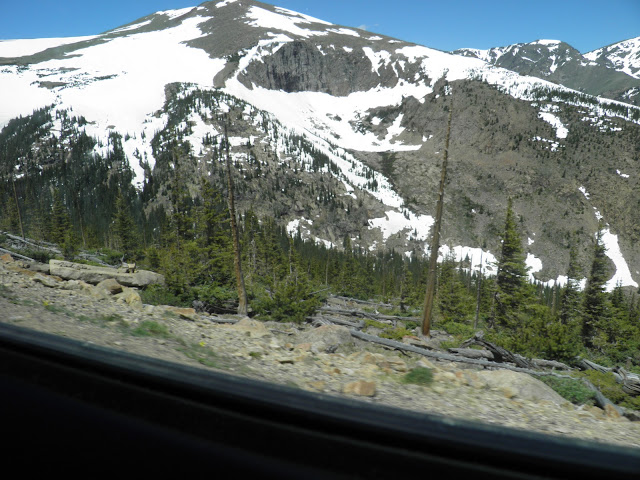What happens when you really gain the elevation though? What happens when you pass through pines, spruces, and then notice that not only is the air getting a bit frostier, breathing is getting a bit rougher and that sun just seems to beat down more than it ever did during that time you fell asleep on the beach and woke up red as a tomato and embracing a beached whale for some reason? Well, depending on where you are, you might see a distinct lack of vegetation and life in general, at least at first glance.
For frame of reference, the pictures used here are going to be largely from the Front Range of the Rockies, and then in Rocky Mountain National Park. That particular shot was taken off of Trail Ridge road which runs through the park and climbs as high as 12, 183 feet up into the wild blue skies. The road is perfectly fine to drive on, at least from late May until early October, but the experience is not for the faint of heart. Most people will have something happen to their bodies once they pass 8,000 feet, and much beyond 11,500 (which also happens to be the tree-line), things can get a bit bumpy. The tree-line is my limit for normal functioning. Above the line, I experienced a slightly light head and reduced reaction time, while my heart rate remained normal. I saw other people on this delightful glacier (yes, you can walk on it) hopping and skipping about without problems, but then I have also been in the car about 2,000 feet lower on I-70 with a friend who nearly passed out from just sitting and breathing as normal.
This is a land of extremes, and seemingly very remote. No one can really live this far up unless they are much closer to the tropics (La Paz, Bolivia is about 12,000 feet up and boasts streets lined with palm trees), and even the trees give way. As you can see, those spruces are either dead or growing on the side of their trunks away from the cold and wind. Most of them are barely 12 feet tall, and are true champions of their species. Twenty feet further up, they shrink into mats of vegetation huddled low to the ground. You can see those here. Those are trees, believe it or not. They are just very small, because the growing season is maybe a month or two months long. And yes, that is an elk. Heaven knows what it is grazing on.
Twenty feet further down are healthier fellows, but they are far less impressive considering as how they are literally protected by themselves. The winds drop inside any forest, and the canopy, even as open as it is here, can keep snow from melting into June or shrubs from defoliating into November. Still, this is a world more than two miles above the sea, and a cold one at that. Even where the forest does pick up a bit more mass, things are hardly ideal for growing.
Now I don't know about you, but those are some pretty amazing trees to be doing that. Sure, the gap in the snow is artificial, as the road is plowed. Truth be told though, I stuck my hand in there, and my arm went all the way in before I felt anything resembling ground. That spruce is mostly trunk! I have no idea how it managed to grow the way it did, as up this far, things grow very slowly (decades for a foot of length). This is what the top of our continent looks like, and not only here. Remember how I advertised mountains as the land of diversity? Well, this land of the tree-line and higher is called the "Hudsonian" life zone. It is named after the southernmost tundra in the world, that which rings Hudson Bay. Species here can be found there as well, and a trip up the mountain gives you the habitat equivalent of driving from Omaha to Churchill, Manitoba. There, and here, even in the most undesirable of conditions, life grows as soon as the sun can hit it.
Mind you, there was still a pretty heavy snow pack.
These pictures were all taken in mid-June, by the way.
There is more on the way. This seemed like an interesting place to stop for now.







No comments:
Post a Comment